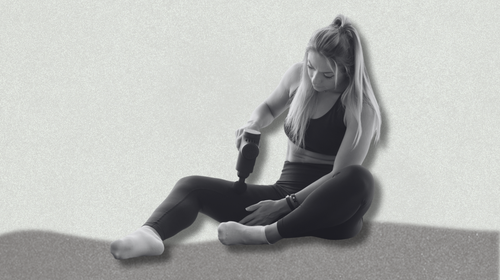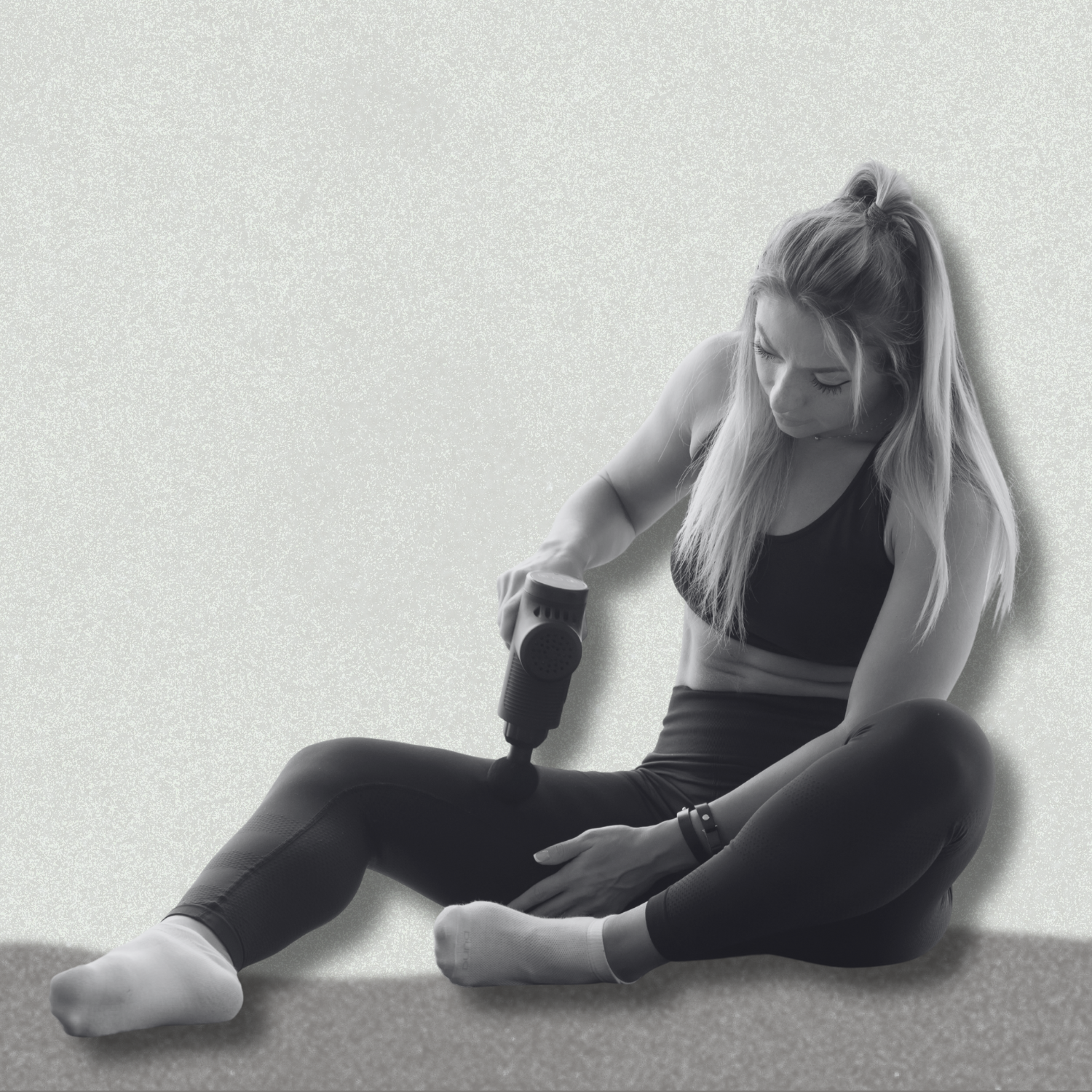There’s one thing that keeps me going back to my gym. It’s not the classes, the weight section, or even the sauna—it’s the massage guns. At least a dozen Theragun Pros, which retail at $499, are available for member use. And after just a few times of hammering the percussive device into my quads, calves, and glutes, I was completely addicted.
The tool mimicked the feeling of the massages I couldn’t afford. As I applied the device’s powerful vibrations to my major muscle groups, recovery seemed so simple and accessible. Whether it was the placebo effect or a true physical benefit, I felt my day-after-training soreness decrease.
I Became Obsessed with My Massage Gun
Sensing my obsession with the device, my roommate gifted me a more affordable version for my birthday. I no longer had to walk four blocks to use a massage gun. Instead, after coming home from a run, I could quickly grab the massage gun and ease some muscle tension.
But as I continuously grabbed my massage gun, I stopped engaging in other forms of recovery. My stretching regimen became lackluster. My foam roller gathered dust under the bed. Noticing this, I reminded myself of a past lesson I’d learned when it came to training: too much of a good thing can actually be a bad thing. Did the same apply to a recovery device?
Massage Guns Are Great, but They Can’t Replace a Stretch Routine
Like all recovery tools, massage guns aren’t a magic bullet—they’re limited in what they can do. At its core, the device can help increase blood flow and alleviate tightness and pain in the short term, according to Brian McLaughlin, a physical therapist specializing in athletic rehabilitation.
While there isn’t a plethora of studies on the effectiveness of massage guns, recent research indicates that you may experience increased mobility for a few hours after using the device, he says. However, a massage gun isn’t an all-in-one recovery tool. While it can be an aspect of your post-workout routine, it can’t replicate other critical elements.
“It’s not going to replace a full workout or a full stretching routine,” says Jessica Valant, a physical therapist and Pilates instructor. You still need to be working on the mobility of your joints to keep them healthy—something that the percussive device can’t play a role in, she says.
The key lies in pairing the two recovery techniques—massaging and active movement, such as stretching—together. Ultimately, that’s what’s going to give you the greatest benefit in the long run, says McLaughlin.
Can You Overuse a Massage Gun?
If you’re using a massage gun safely, then the possibility of overdoing it is unlikely to arise. Much of it comes down to timing.
Typically, McLaughlin recommends only using the device for 30 seconds to two minutes on a particular muscle group. “Keep it moving and pay attention to your body,” he says. “If you find yourself tensing up more, move to a new spot or maybe change the intensity or setting.”
Sure, you can reach for your massage gun after your long runs, but not after every session.
Using a massage gun too much can result in bruising—and potentially leave you feeling more sore than you did before grabbing the tool, Valant says.
If you’re turning to it for an extended time after every workout, you may need to reevaluate the intensity of your exercise regimen, McLaughlin says. Sure, you can reach for your massage gun after your long runs, but not after every session.
It also may not be the best tool for everyone. As with anything when it comes to your health, consult a medical professional before reaching for the device—especially if you’re pregnant or are dealing with a severe injury or infection.
I kept McLaughlin’s words in mind this past week, taking a closer look at my recovery routine. After my Saturday long run, I pressed the device into my quads and calves, but I also paired it with a five-minute mobility routine. I’m still obsessed with my massage gun, but now I’m thinking about my long-term fitness goals.
Want more Outside health stories? Sign up for the Bodywork newsletter.


